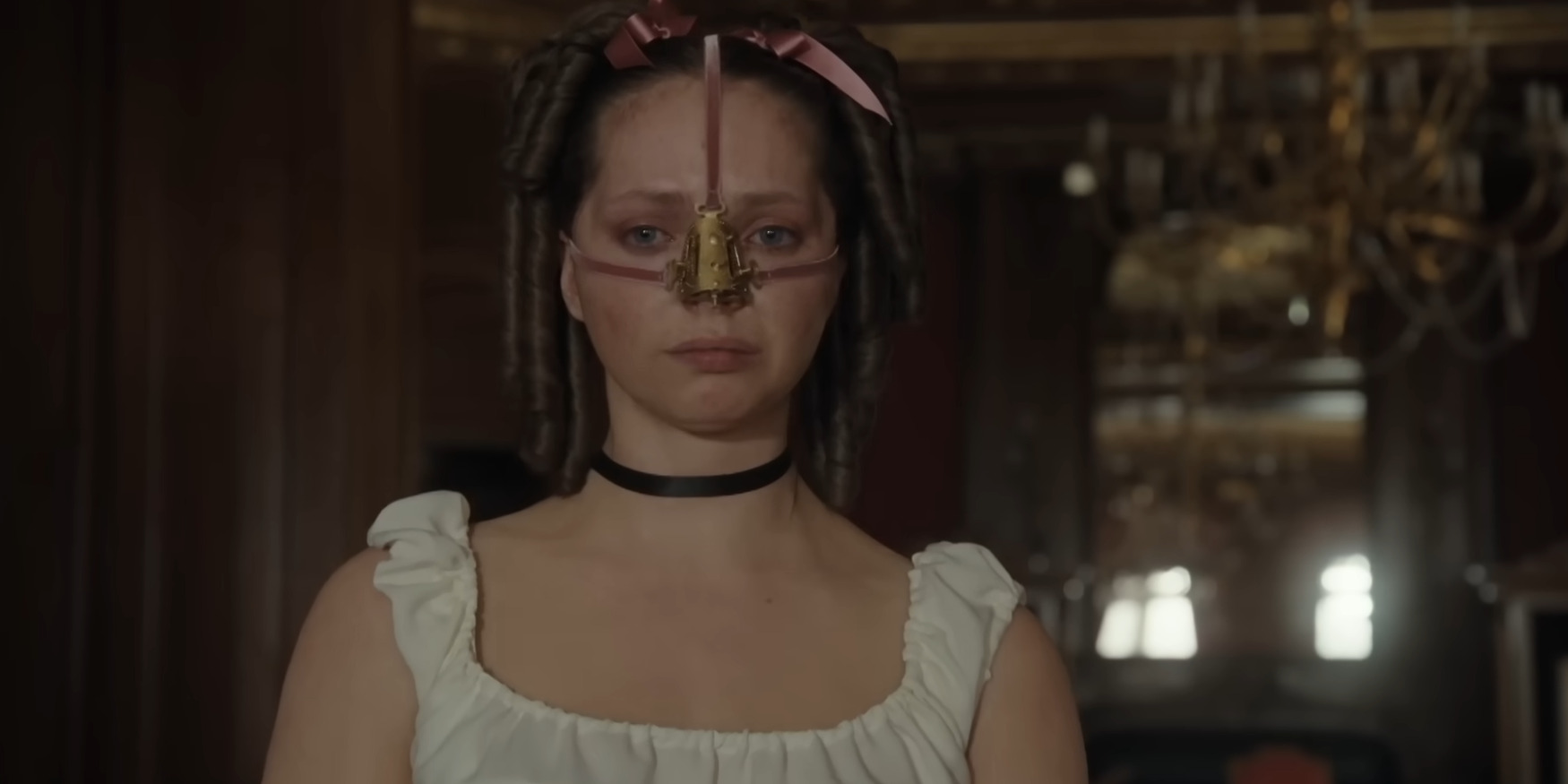Shudder’s ‘The Ugly Stepsister’ is a Norwegian body horror film that presents a unique take on the classic Cinderella story. It revolves around Elvira, the titular stepsister, who comes into Agnes’ life shortly before the death of the latter’s father. As the young girl grows into her womanhood in the shadow of her new sister and her seemingly boundless beauty, she begins to scrutinize what the world around her perceives as her own shortcomings. Consequently, Elvira finds herself hurling down a destructive path in the pursuit of physical perfection, achieved through any means necessary. However, when the lines between beauty and pain begin to blur, the young woman’s life dangerously spirals out of control. Thus, in the midst of a fairytale world, the story’s protagonist finds herself hurtling toward a nightmarish end. SPOILERS AHEAD!
The Ugly Stepsister Plot Synopsis
From a young age, Elvira sports idealistic notions of romance, daydreaming about one day winning over the Prince’s heart. She holds onto these same fantasies after her mother, Rebekka, marries a wealthy widower, Otto, earning her two daughters a stepsister, Agnes. However, the wedding’s revelry only lasts so long, especially since Otto passes away during family dinner on the night of the wedding. In the days that follow, Rebekka learns a horrible truth: her recently deceased husband had no real wealth to speak of. Consequently, the widow who came into this marriage with plenty of debt over her head has to sell away the family’s lands and assets to appease the lenders.
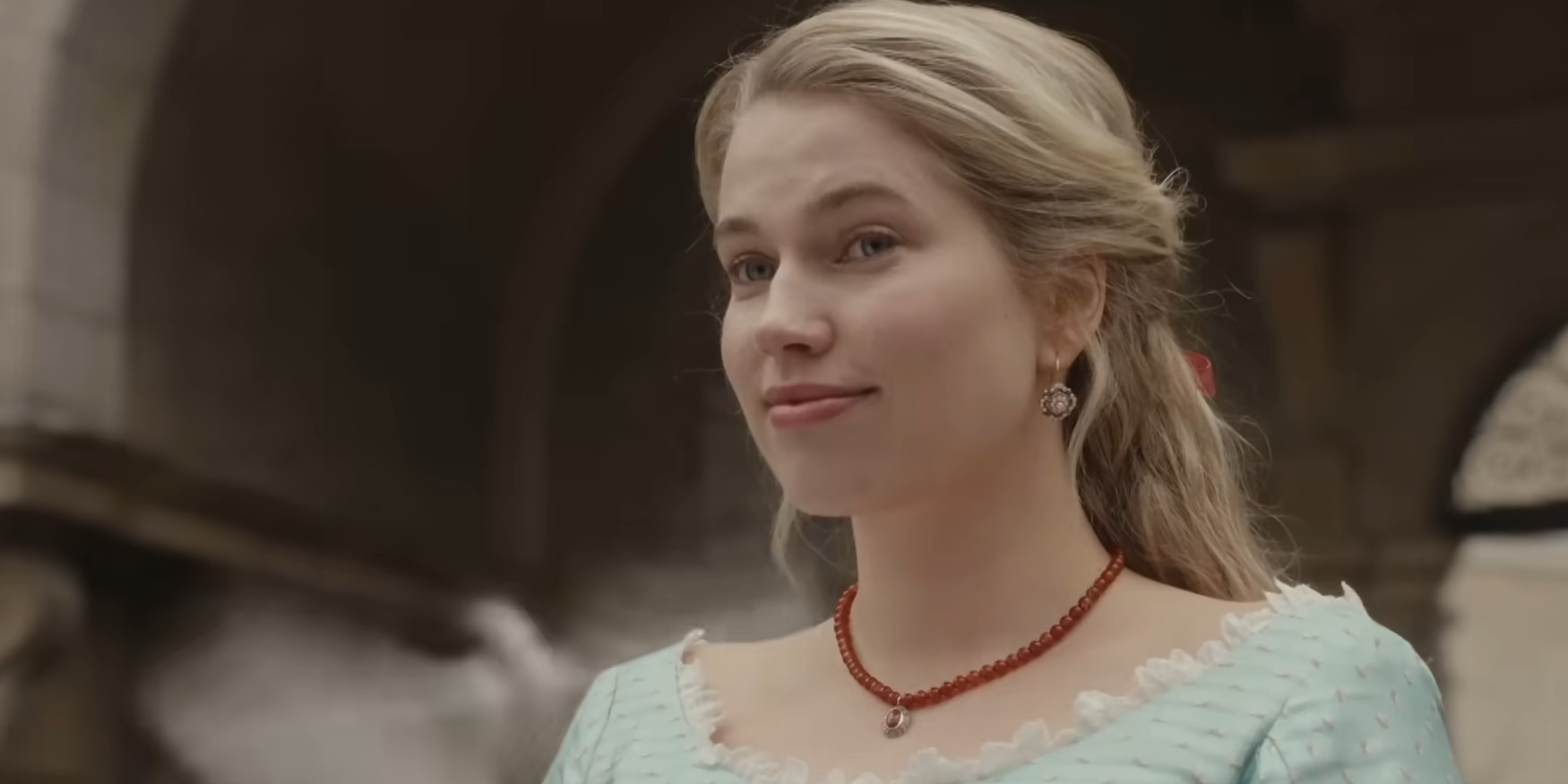
Shortly afterward, a message from the castle arrives, announcing an upcoming ball where Prince Julian will be choosing his future bride. Elvira and Agnes, the two eligible women in the house, register their names for the event, and Rebekka allows herself to get her hopes up. However, she believes her eldest daughter is simply too unattractive to succeed at the ball. For the same reason, she hires Dr. Esthétique to fix every flaw she perceives in Elvira. Naturally, the daughter remains excited at the prospect of the makeover since she has been told her entire life that features such as her full cheeks, askew nose, and sparse eyelashes are indicators of her ugliness. Nonetheless, nothing could’ve prepared her for when the doctor takes the brutal chisel to her nose.
In the aftermath, Elvira finds herself donning a nose brace for months to come. In the meantime, like the other girls in the village, she attends a finishing school that prepares its students for the upcoming ball. Yet, she strikes out there as well when her instructor remains bitter toward her while favoring Agnes as the star student. Consequently, when the other instructor, Sophie, offers Elvira a possible solution to her problems, a tapeworm larva, the latter is quick to accept it. Even though her sister, Alma, is horrified at the idea, the older sister remains insistent and swallows the worm to lose weight without starving herself. Furthermore, she finds a golden opportunity to dismantle Agnes from her high horse after she finds the latter having sex with Isak, the resident stable boy.
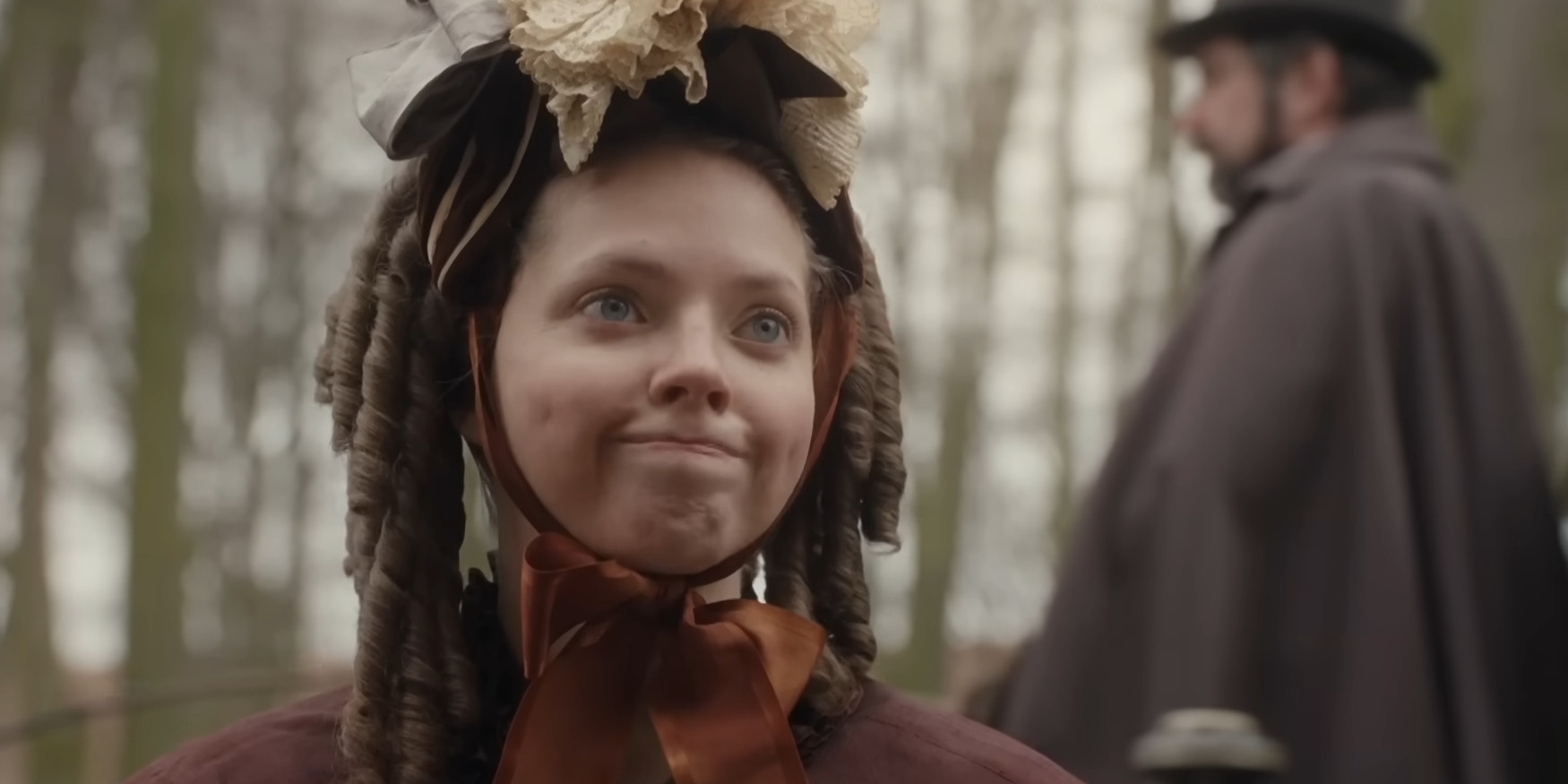
As a result, Agnes is effectively relegated to the position of a helping maid around the house and forbidden to attend the ball. Meanwhile, Elvira continues chasing her dream of becoming the ideal young woman for the Prince. Three months later, once the nose brace comes off and the tapeworm significantly slims her figure, everything seems to be coming up for her. Still, even more pain awaits her, especially when her mother puts her through another cosmetic procedure of getting longer eyelashes sewn onto her lids. Nonetheless, for all the pain she undergoes, when the ball rolls around, Elvira enters the event as one of the most distinguished women in the room. She even captures the Prince’s attention, that is, until a mysterious woman in blue arrives, instantly stealing Julian’s affection.
The Ugly Stepsister Ending: What Happens to Elvira and Alma?
Elvira’s story remains uniquely heartbreaking from the very beginning. She’s always yearning for a happily ever after romance with the Prince of her dreams. Nonetheless, time and again, she’s reminded by the people around her that she isn’t beautiful enough to ever hope to capture his attention. The worst of it arrives when she has an encounter with Julian in the woods, during which the crass Prince crudely notes how he wouldn’t ever want to have sex with her. It only serves to underline the lesson she has been taught from a young age: beauty is the only way she can have actual worth in society. While some of it comes from Rebekka and her poisonous perspective, the world also repeatedly teaches her the same.
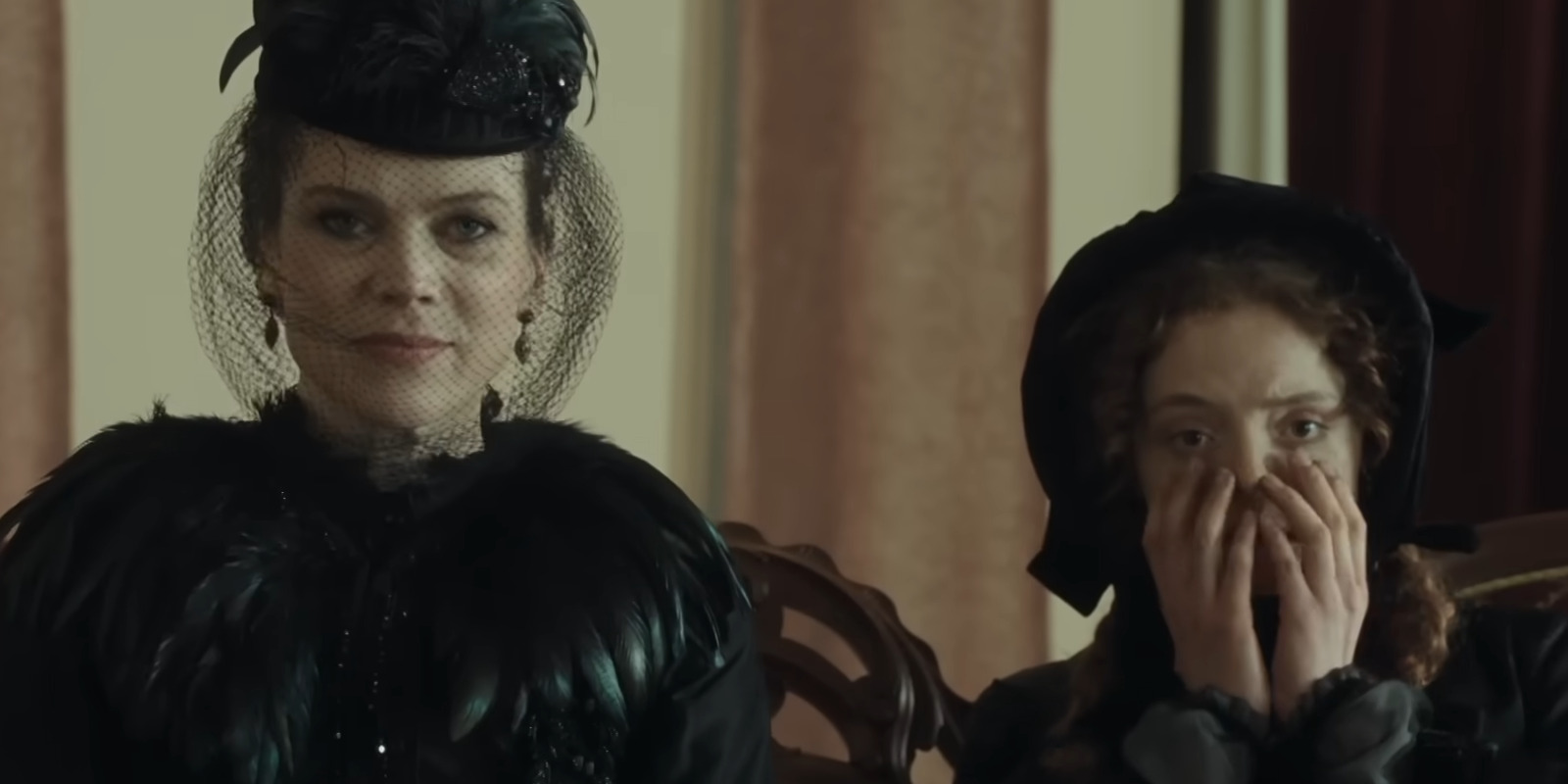
In finishing school, Agnes receives the instructor’s favor while all Elvira gets is ridicule. Even when Instructor Sophie attempts to be kind toward her, it’s with the gift of a tapeworm egg to slim her down. Thus, the message remains loud and clear: in order to achieve beauty, Elvira must change everything about her, even at the cost of inscrutable pain. Worse yet, this tactic actually ends up being beneficial. Once her nose brace comes off and the tapeworm keeps her notably starved, Elvira begins to become the proverbial and literal belle of the ball. Even Prince Julian, who had previously mocked her, becomes beguiled by her manufactured beauty. Yet, all of it comes crashing down when Agnes shows up at the ball, dressed to the nines with the help of her fairy godmother.
Julian forgets all about Elvira and discards her in favor of Agnes without a second thought. Consequently, this sends the former into a breakdown, especially once she realizes the identity of the mysterious woman in blue. In fact, she goes into such a rampage that she chases Agnes around with a knife to steal her shoe. Yet, the worst of her mania arrives when she chops off her own toes in an effort to fit the same shoe. She dreams of the cruel act bringing her closer to her happy ending with the Prince. Nonetheless, in the aftermath, she’s only left broken, bruised, and bloodied while the Prince arrives and sweeps her stepsister away as his bride-to-be.

Even so, while everyone else may have given up on Elvira, she still has one person in her corner, Alma. While her sister takes the brunt of their mother’s scrutiny and toxic teachings, Alma manages to grow up with a mind of her own. At every turn, she’s horrified at Elvira’s willingness to hurt herself to meet the elusive standard for beauty. As such, when the older sister is finally abandoned, left beyond exploitation, she steps in to guide her back toward taking autonomy over her body. Together, the two sisters get rid of the terrifying tapeworm inside Elvira, finally freeing her from the never-ending cycle of pain and beauty. In the end, the two sisters flee together, away from Rebekka’s influence. Even though their final destination remains uncertain, it’s evident that thanks to Alma’s help, Elvira will no longer be feeding into the society’s constant need to demand non-existent perfection.
Why Does Elvira Cut Off Her Foot?
Elvira’s descent into madness gradually builds up until her actions become more and more concerning. When she undergoes Esthétique’s chisel, it makes for a brutal scene. However, it hardly appears unbelievable, especially when viewed through the modern sensibilities around nose jobs and plastic surgery. Similarly, her decision to swallow a tapeworm egg, though extreme, remains comparable to the harsh diet culture and relevance of weight-loss drugs in contemporary society. Consequently, as her scrutiny of her physical forms grows, bringing severe solutions, the narrative naturally grows in underlying horror. Eventually, the story reaches its peak when all that stands in Elvira’s way is Agnes and her shoes.
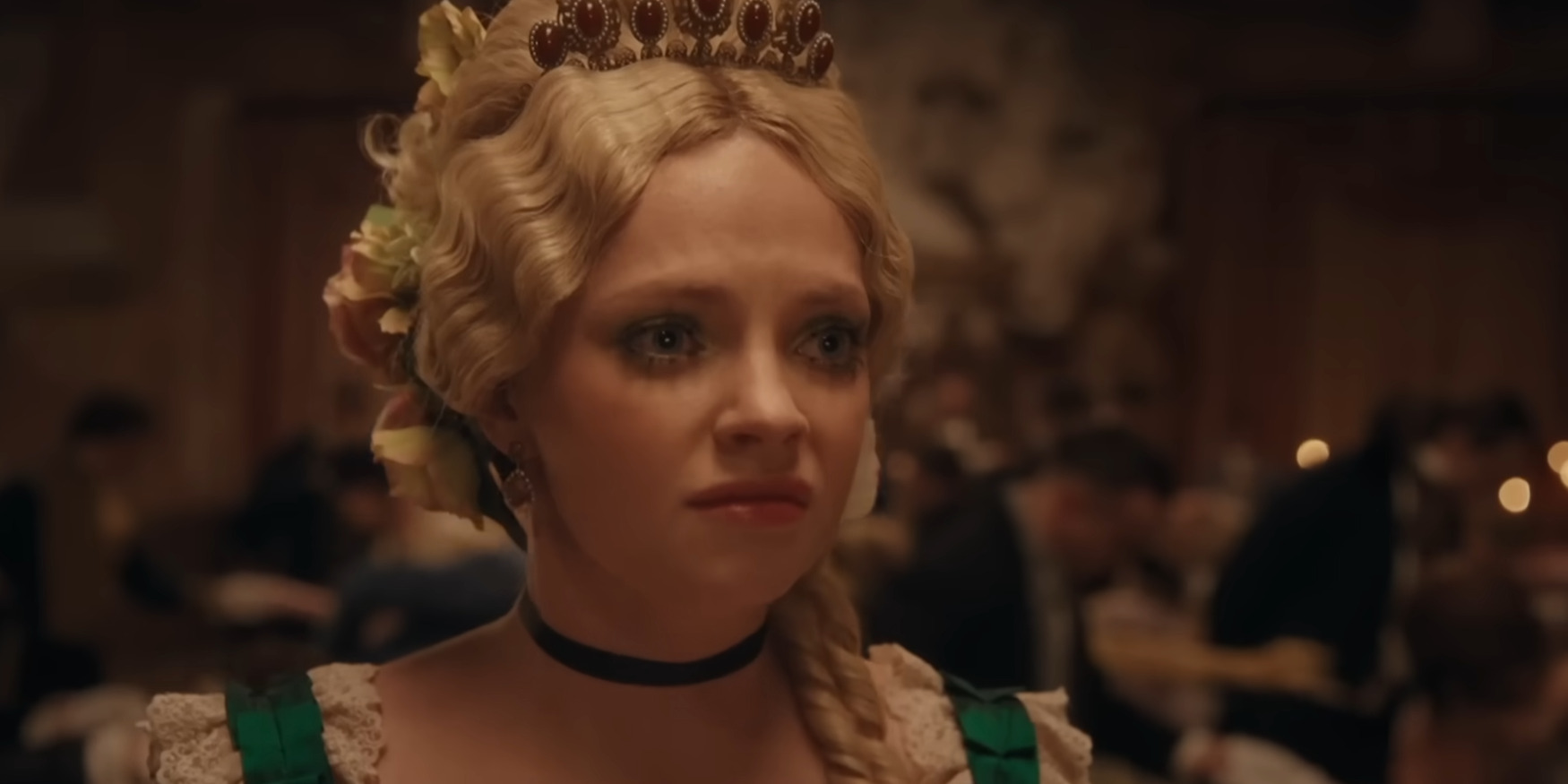
Despite the various hardships she suffers to make Julian choose her, the Prince still abandons her for her naturally cherished stepsister. It serves as a constant reminder that no matter how hard Elvira tries, she will never be rewarded for her beauty, which is the only currency she has. Still, she refuses to give up. Elvira has already made many sacrifices: her nose, her eyes, her appetite. Therefore, in her psychotic rage, she’s willing to make one more. If the Prince will only have someone with tiny feet, then she’s ready to chop her own toes off. Even though she has previously put her body through much the same, the lack of clinical affirmation behind this act makes it all the more gruesome and eye-opening. Ultimately, the horrifying act perfectly caps off the consistent bastardization arc that the character has been on from the start.
Does Rebekka Know Her Daughters Are Leaving? Why Does She Let Them?
In the aftermath of Prince Julian’s decision to make Agnes his bride, Rebekka and her girls are plunged into a dark reality. They can no longer cling to the hope of bettering their financially decaying circumstances through Elvira’s possible marriage proposition. Even though the girl could have secured other offers through the connections she made at the ball, her psychotic breakdown leaves even that door shut. Additionally, Rebekka also joins her daughter in this madness by willfully cutting off the toes of Elvira’s other foot to make the right sandal fit her. Nonetheless, Alma, the only level-headed member of the family, manages to escape the pressures of society.
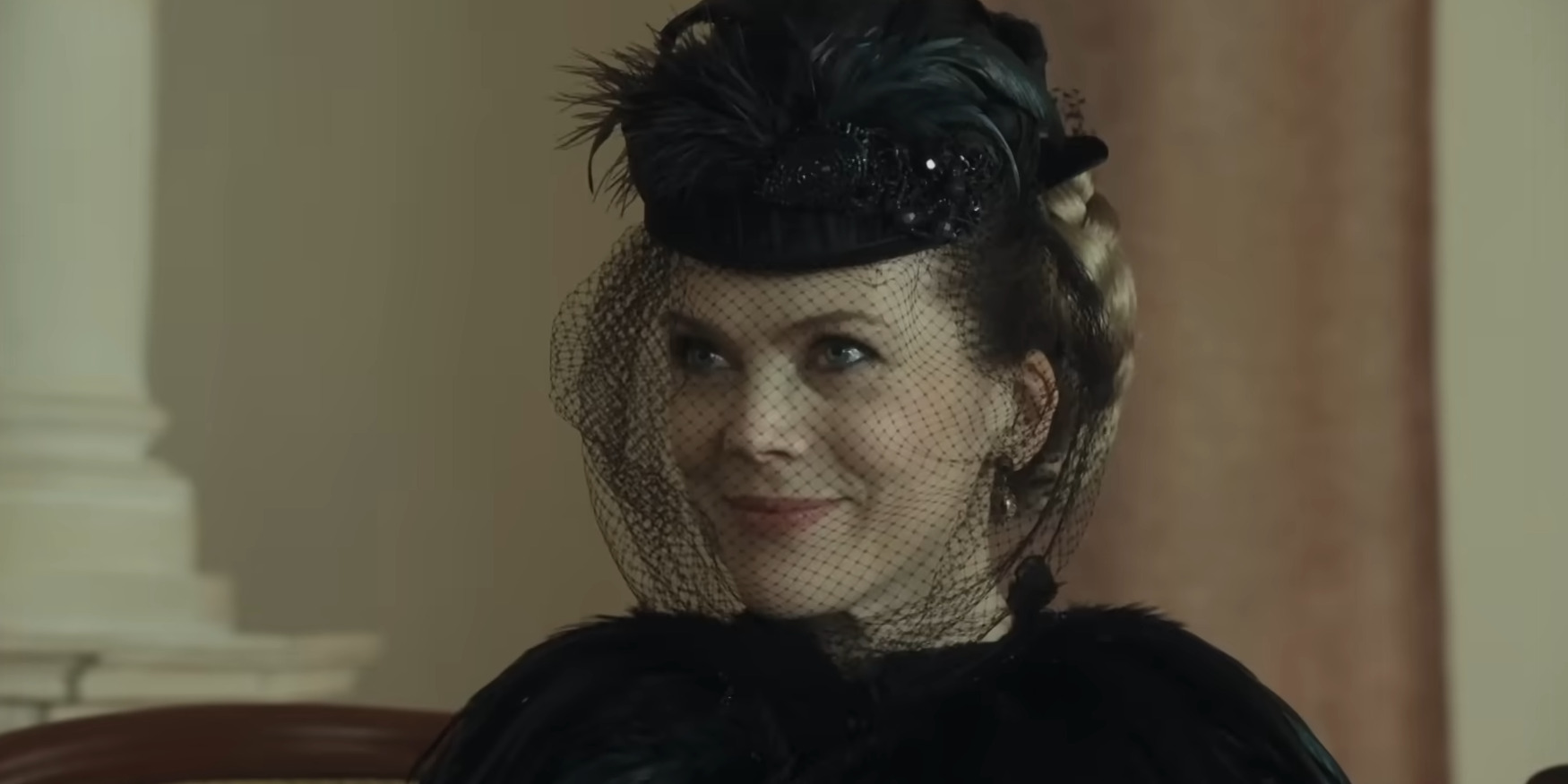
By growing up under her older sister’s shadow, Alma enjoys the benefit of carving out an identity for herself outside of things like beauty and its contribution toward future marital opportunities. After she witnesses her mother’s blatant physical violence against Elvira, she finally comes to terms with the fact that the house is no longer and has never been safe for the two daughters. As such, while her mother is busy entertaining a gentleman friend of hers, Alms sneaks into her room and steals one of her expensive jewelry pieces. Rebekka witnesses this robbery and allows it to happen.
The scene offers a unique insight into Rebekka’s character. From the beginning, she remains a harried woman who is concerned with securing finances for herself and her two daughters. Life has matured and worn her down enough for her to recognize that women like her can only make money one way or another. For the same reason, she’s so concerned with securing good marriage prospects for Elvira through whatever means necessary. However, in the process, she robs her daughter of her humanity, instead treating her like a doll to be fixed and broken at will. Therefore, much like Elvira herself, the act of cutting the girl’s foot comes as a personal reckoning that makes the mother realize the horror of her ways. She knows her sins against her daughters have gone too far, and she retains no hope for forgiveness. Thus, she chooses to let Alma slip away with her sister, finally allowing her daughters the autonomy and agency she has been hoarding from them all this time.
Post Credits Scene: The Morbid Reality of Agnes’ Happily Ever After
The story concludes with Prince Julian claiming Agnes as his bride, while Elvira and Alma pursue their freedom away from their mother and the kingdom that has only hurt them. However, the film includes one macabre post-credit scene, which reveals that Otto’s dead body is still rotting away in a locked part of the house, robbed of a proper funeral. Shortly after his death, Agnes attempts to advocate for funeral processions to take place at the estate to grant her father a proper burial. Nonetheless, Rebekka maintains that the family simply doesn’t have the money to indulge in such ceremonious frivolity.
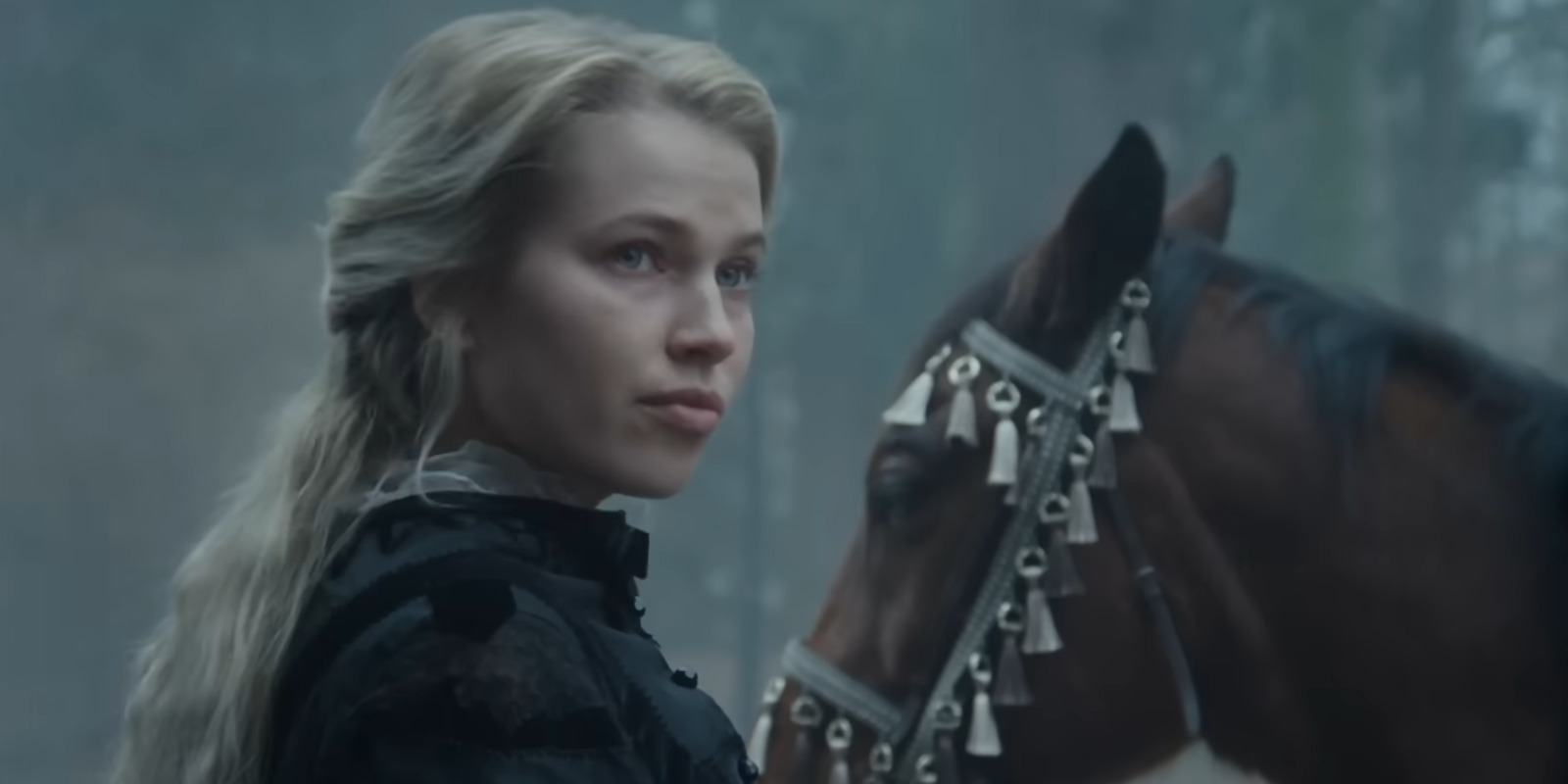
The fact that she goes on to secure cosmetic surgery and expensive gowns for her prized daughter remains a testament to her indifference toward Otto. Naturally, Otto’s fate and disrespect in death become a notable point of conflict for Agnes. When her dreams of going to the ball are crushed with the destruction of her dress, she sobs beside her father’s rotting corpse, trying to find solace in a morbid scene. Furthermore, her dead mother comes to her as her fairy godmother in the same room, and the maggots feeding on Otto’s dead body sew Agnes’ dress for her. Therefore, the place is intrinsically tied to her storyline.
Yet, the post-credit scene’s revelation that Otto’s dead body is trapped in the house even when Agnes isn’t, presents a troubling reality. Although it would be idyllic to imagine the scorned stepdaughter went on to find a happily ever after with Julian, several facts remain. For one, Agnes is never shown to be in love with the Prince. Her heart had once belonged to Isak, who may still be the love of her life. Furthermore, as evident in Julian’s past actions, the Prince isn’t exactly kind and compassionate. As such, it’s possible that even though Agnes gets to escape her situation by becoming a Princess, she still doesn’t find true freedom. At least not enough of it to be able to save her father’s rotting corpse from Rebekka’s nightmarish house.
Read More: Is The Ugly Stepsister a True Story? Is Swedlandia a Real Place?

